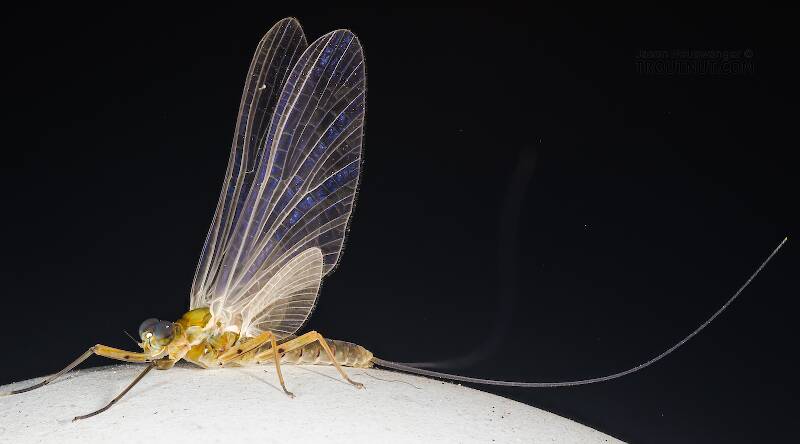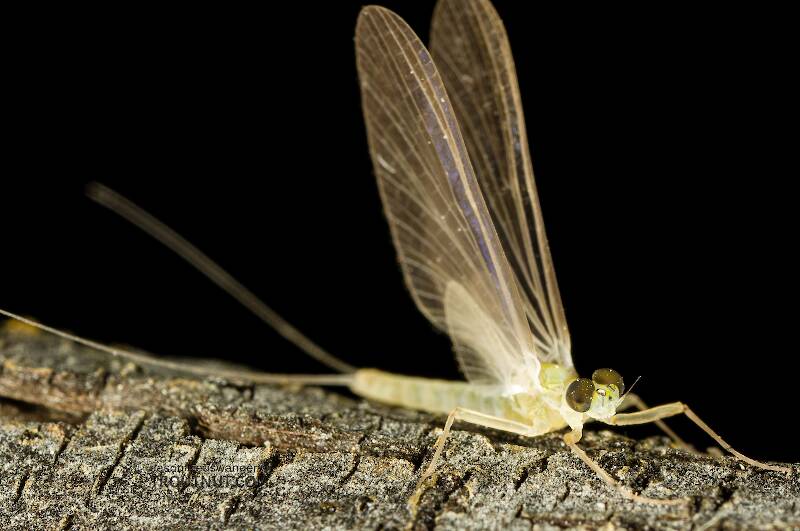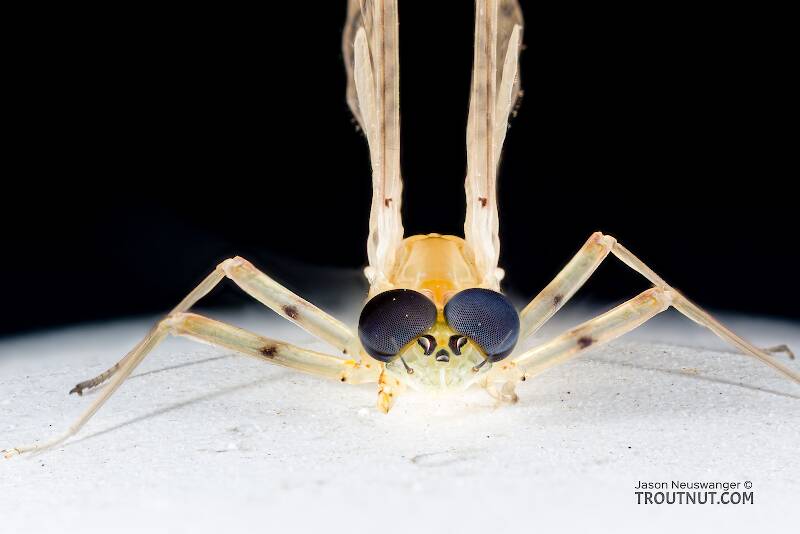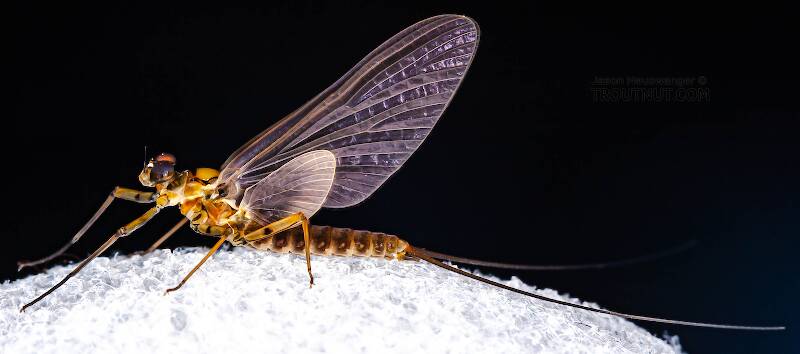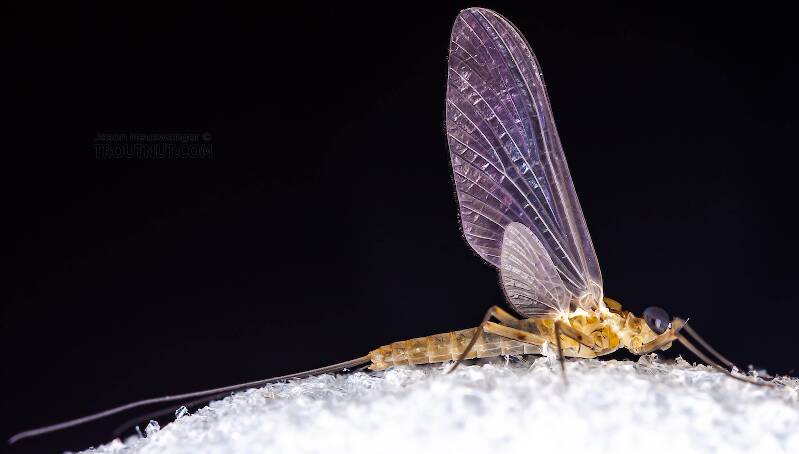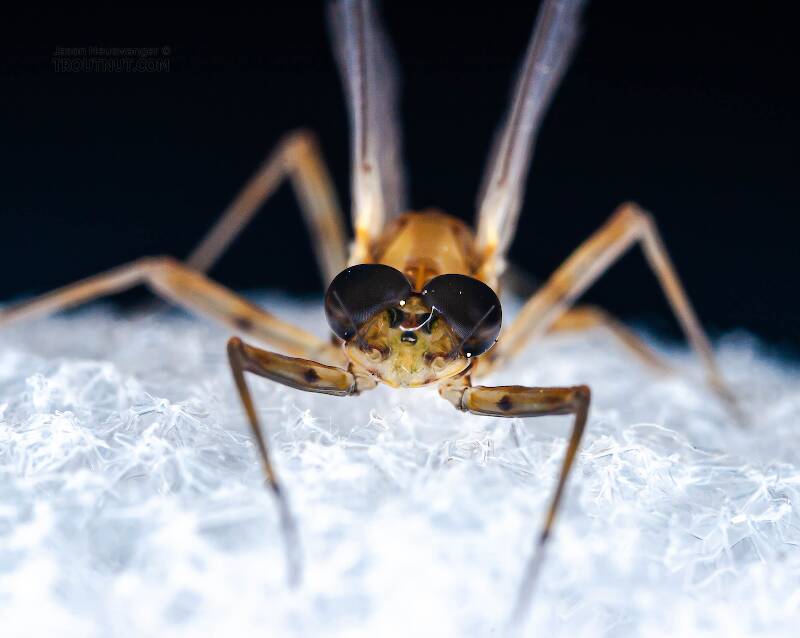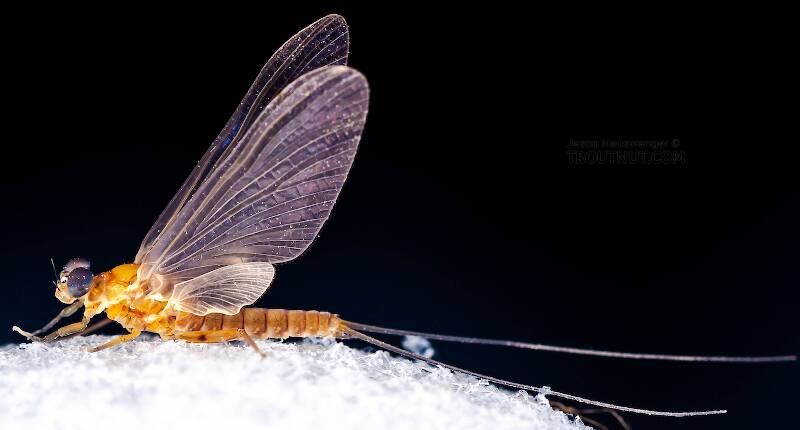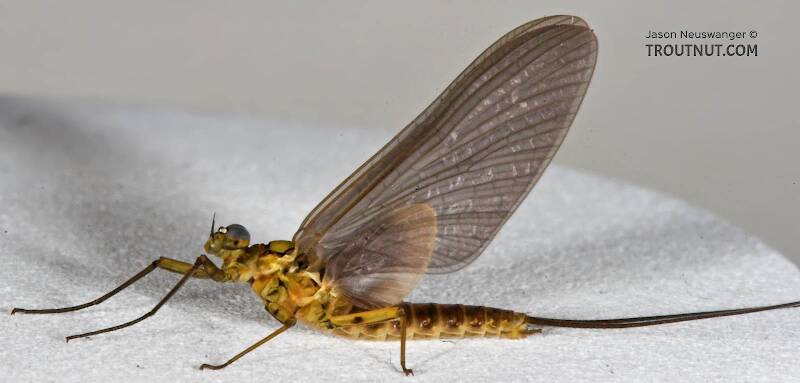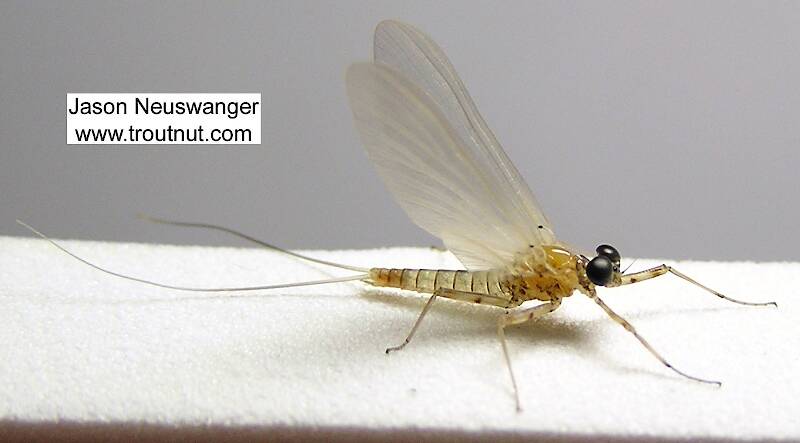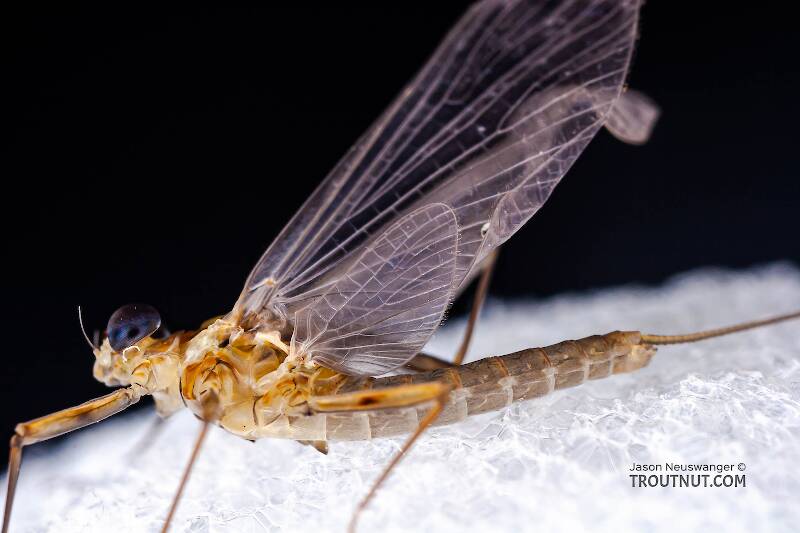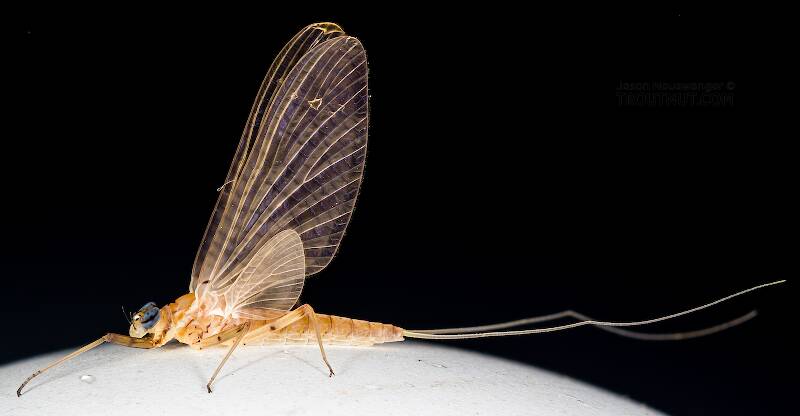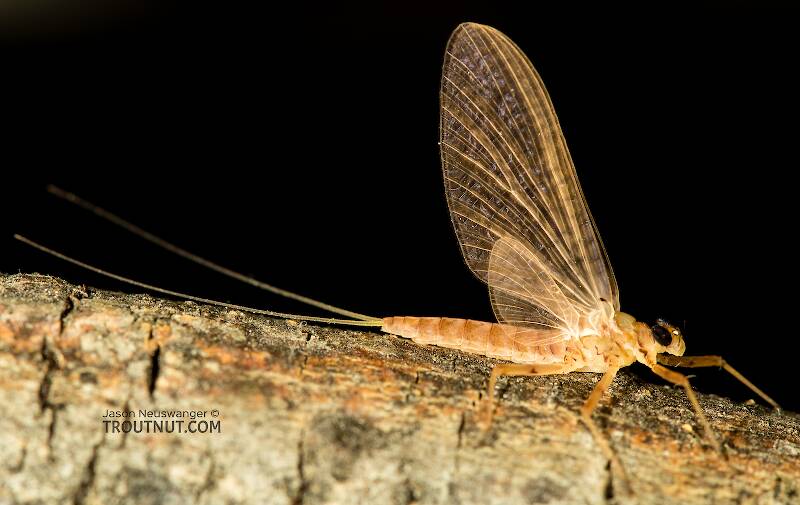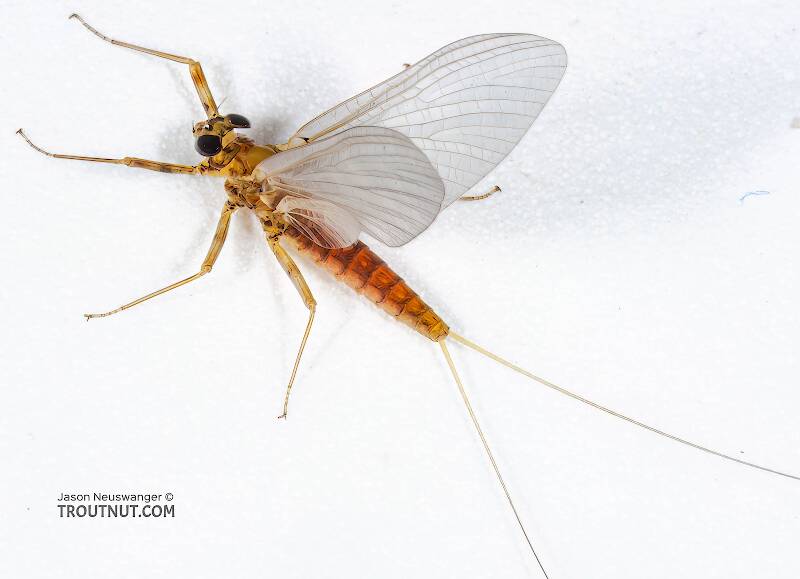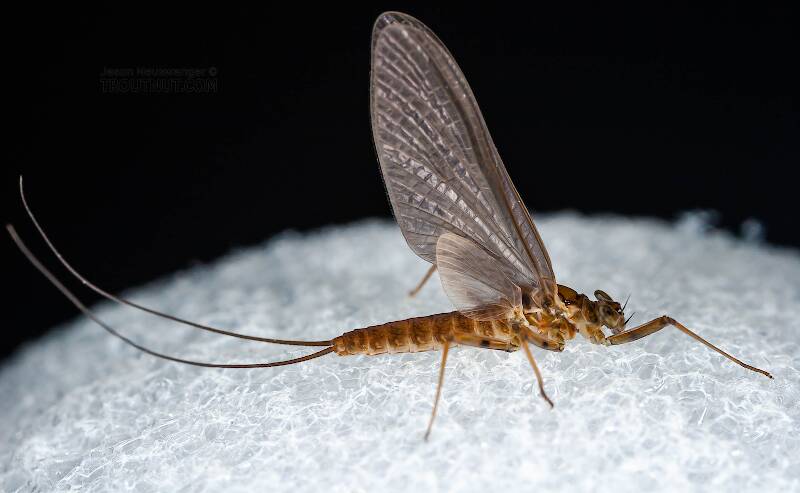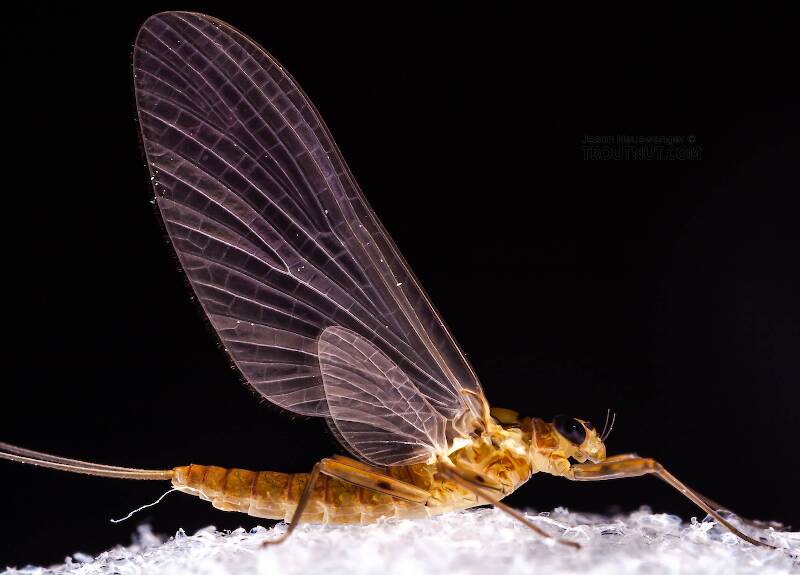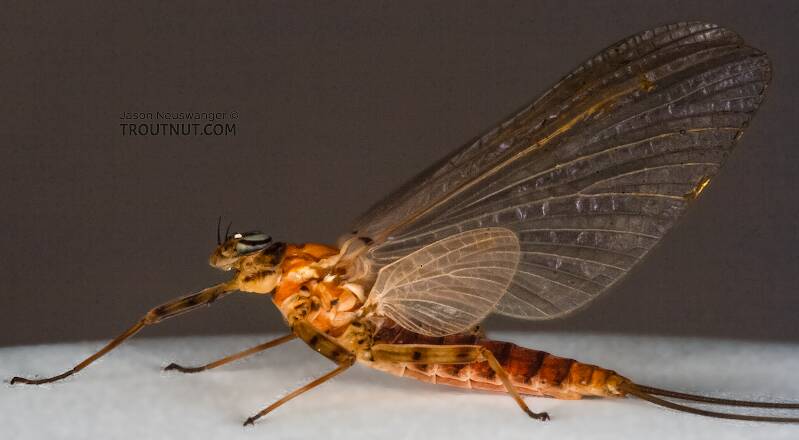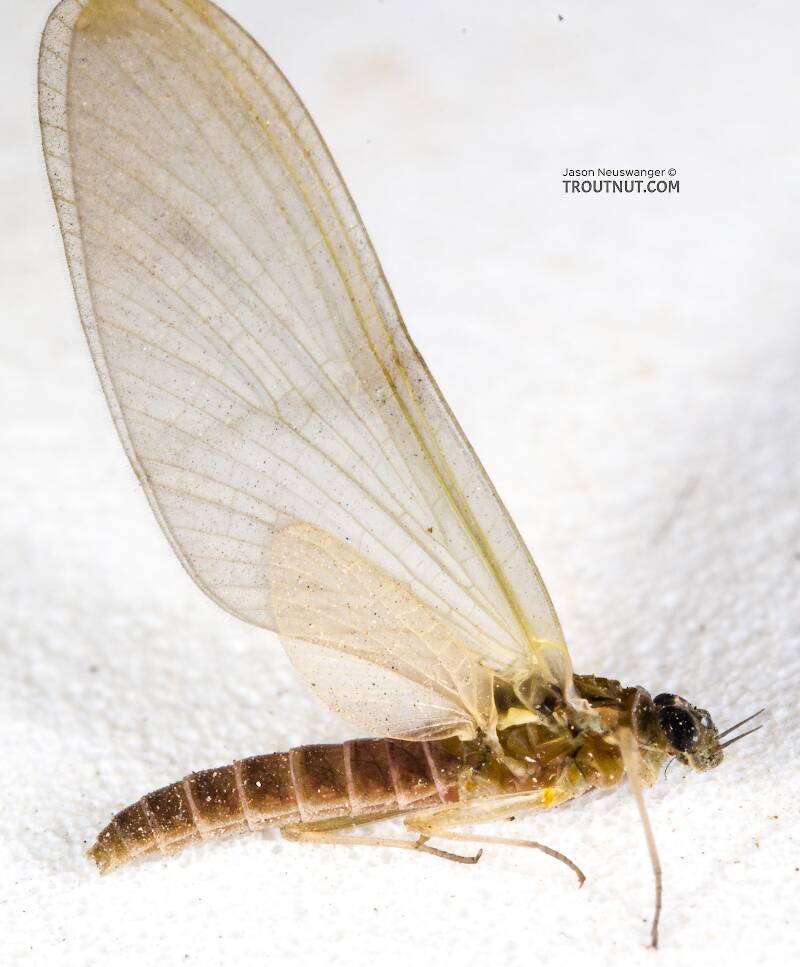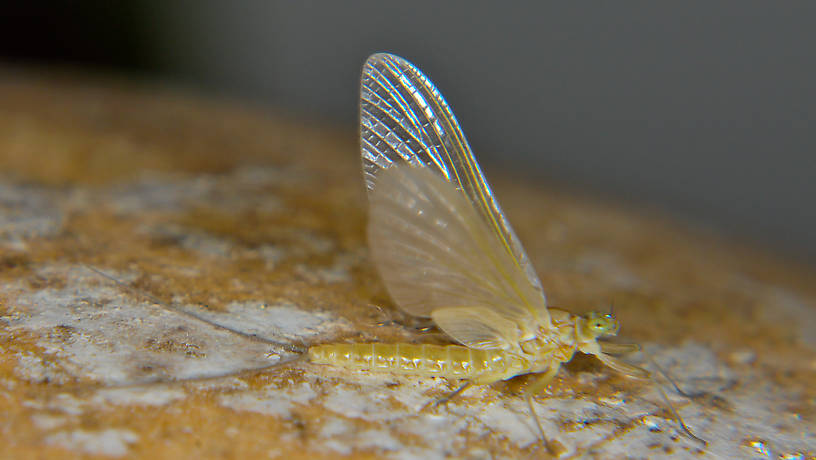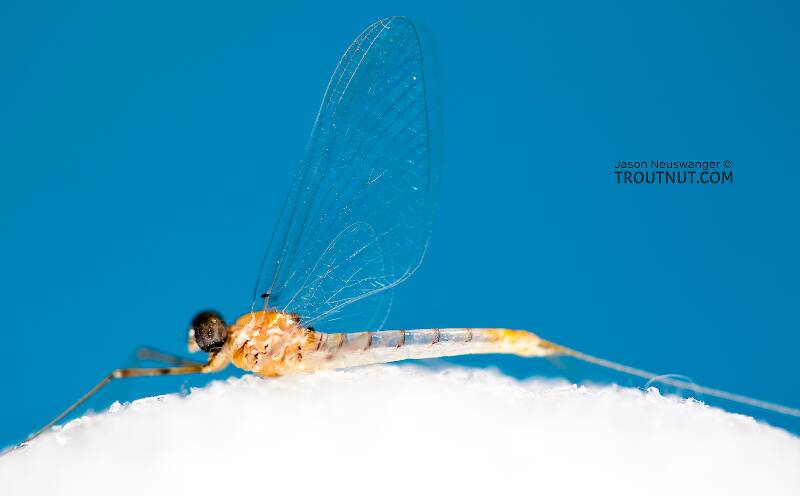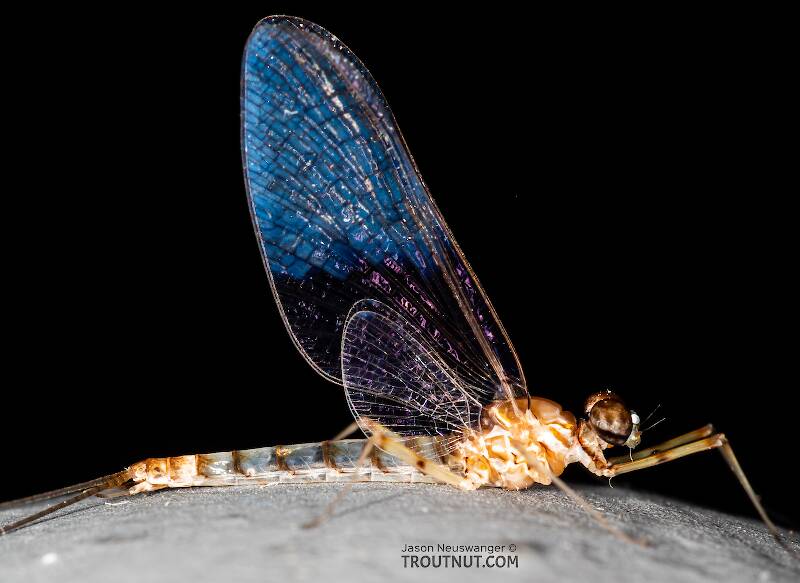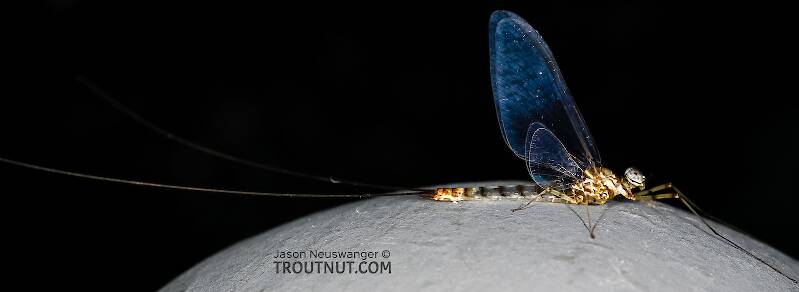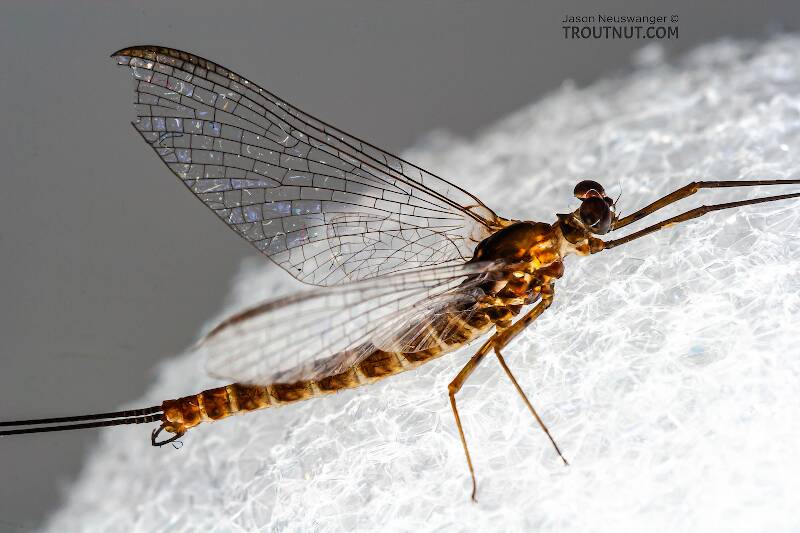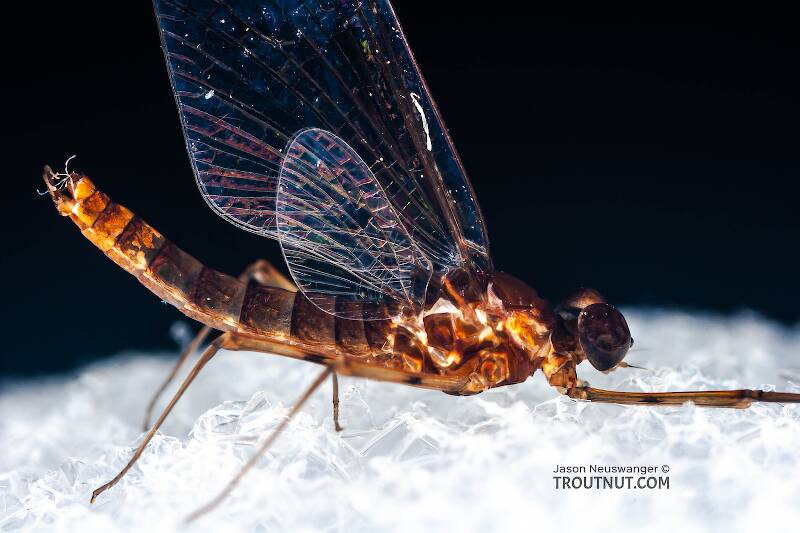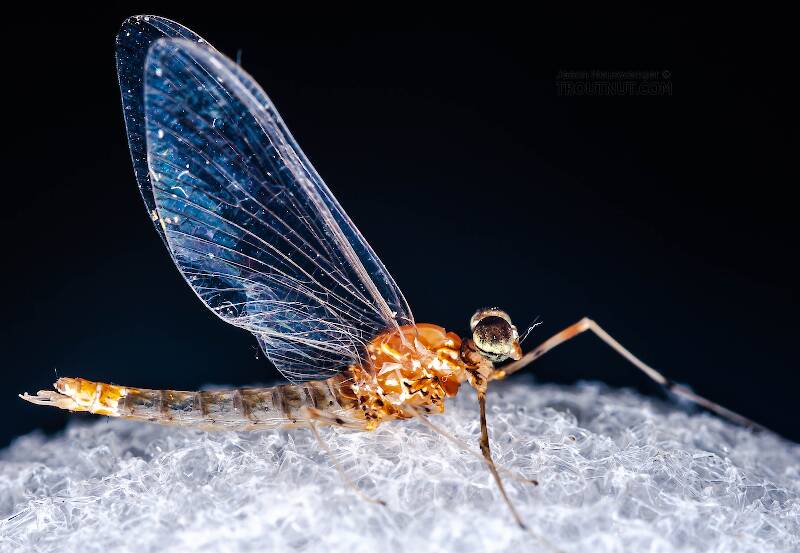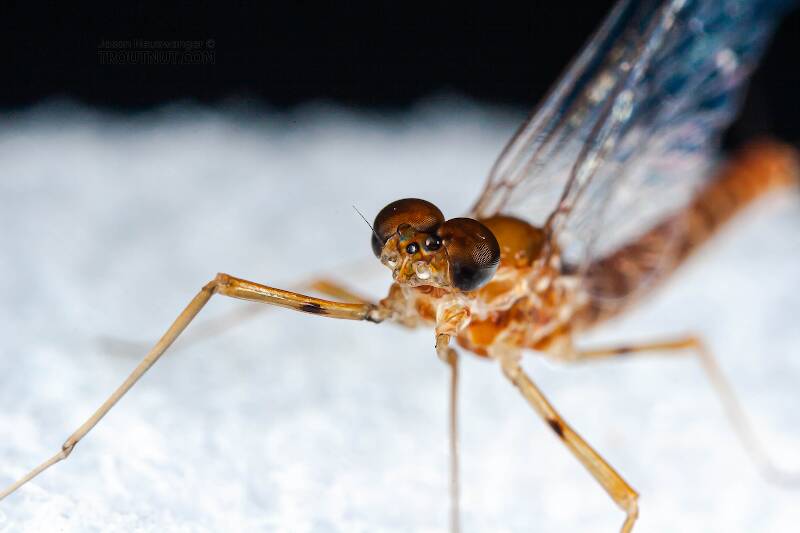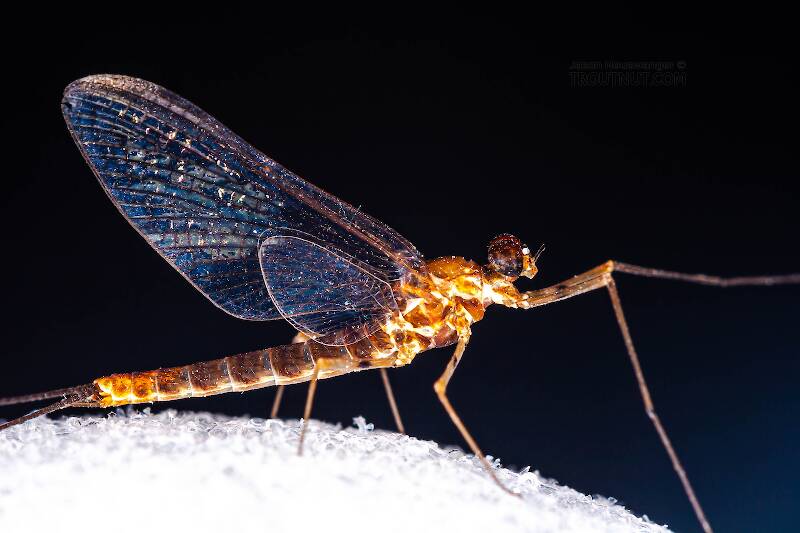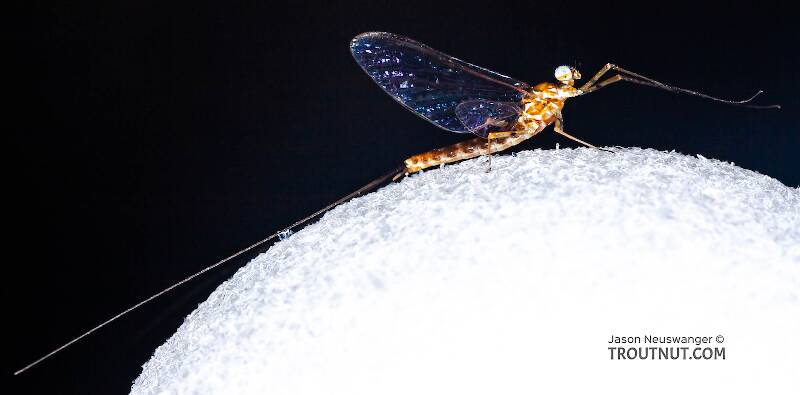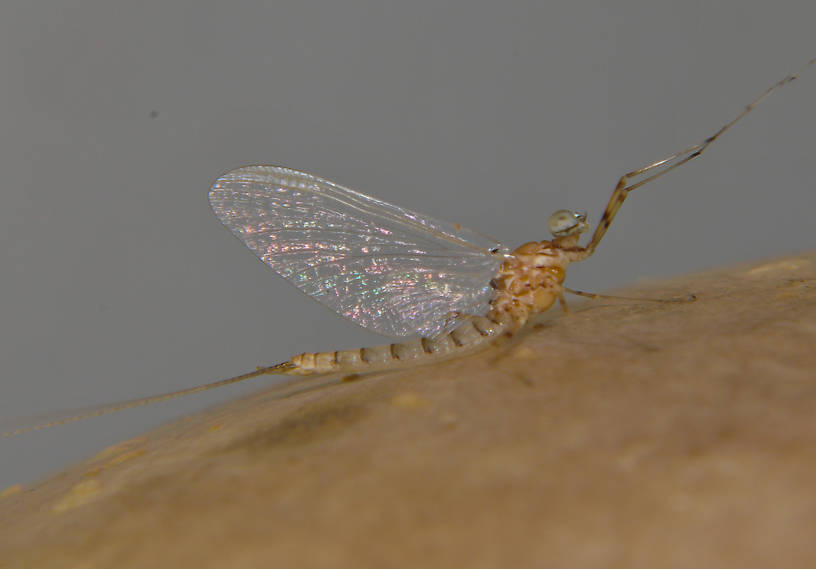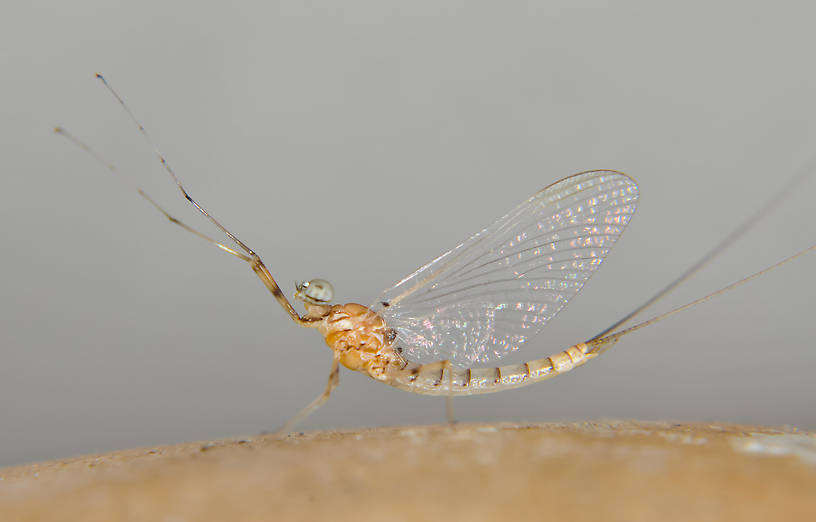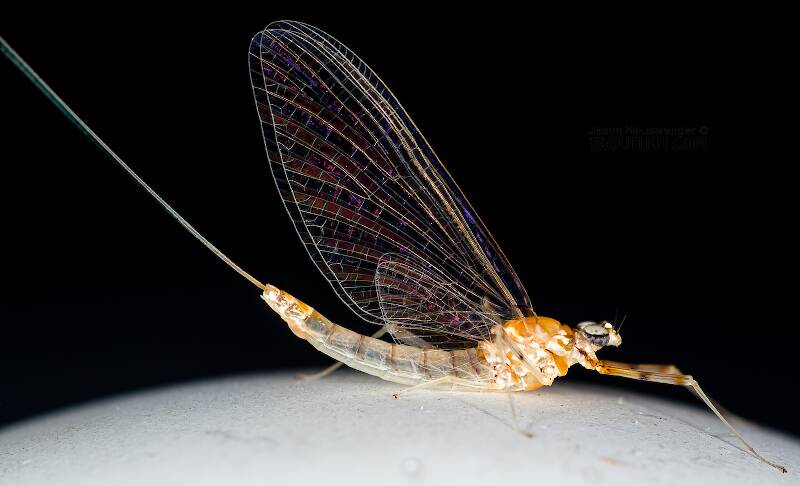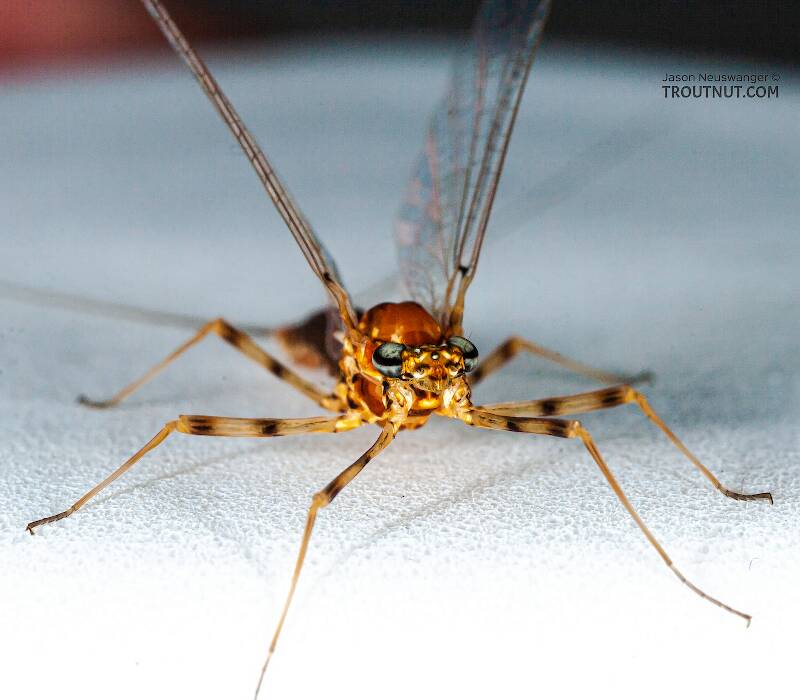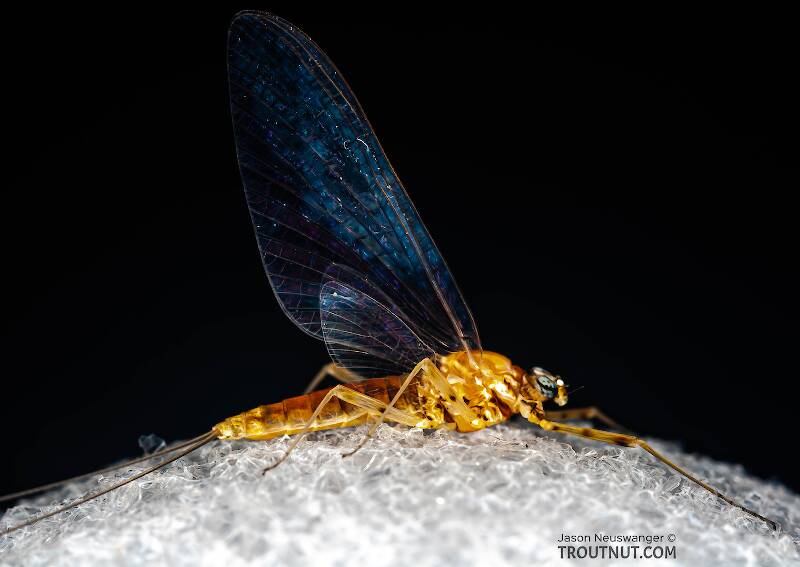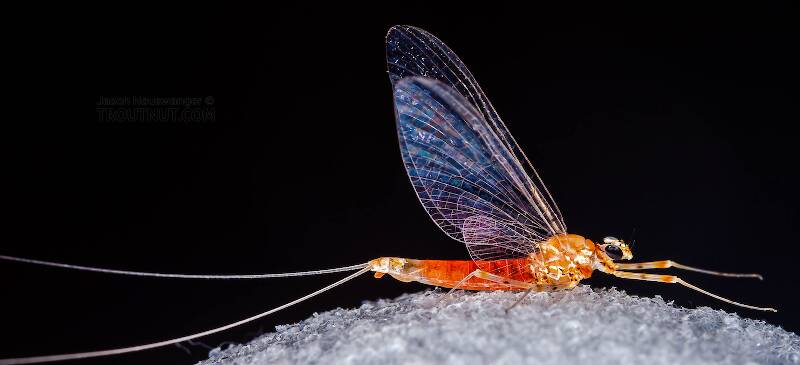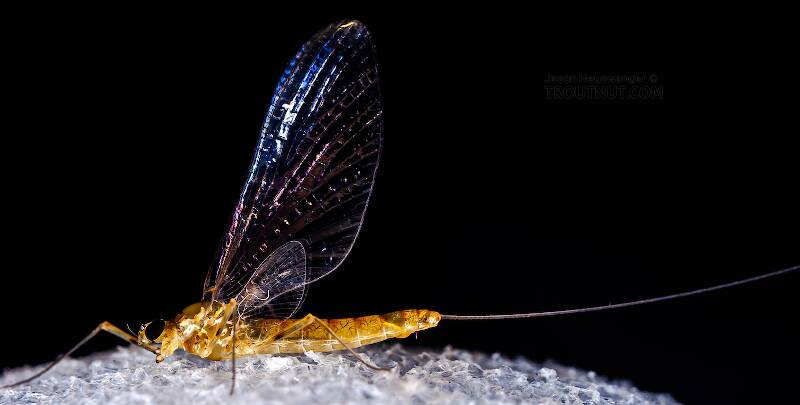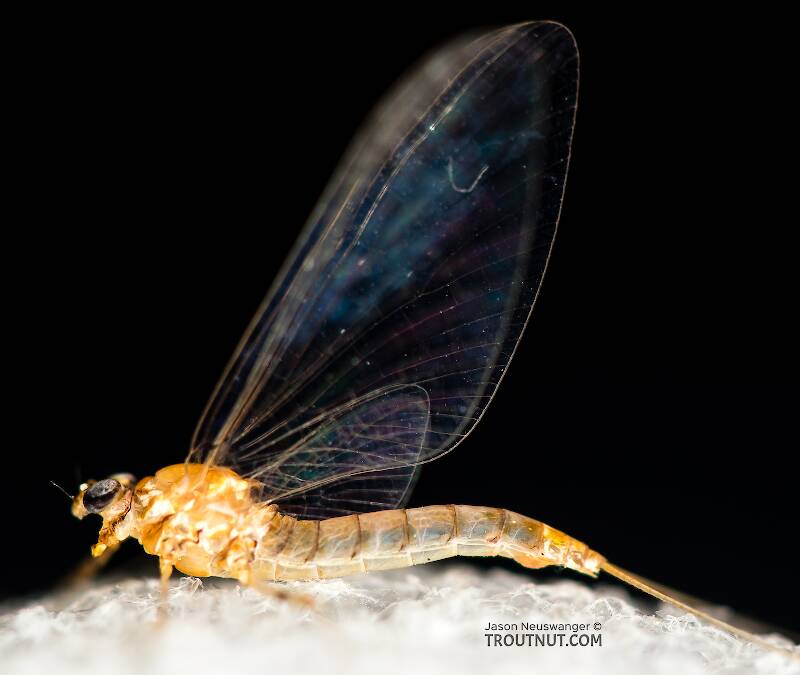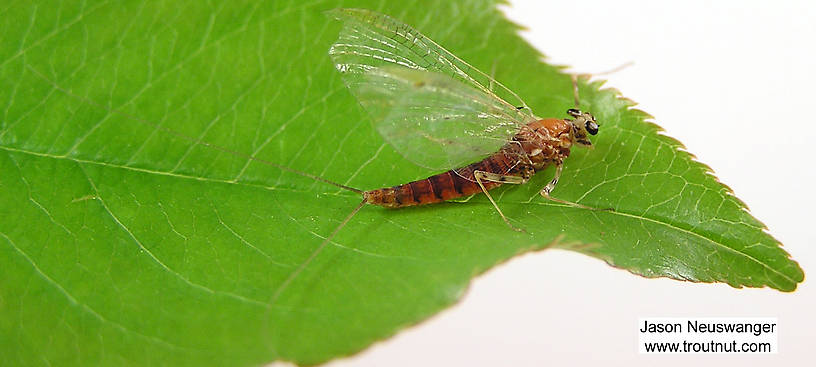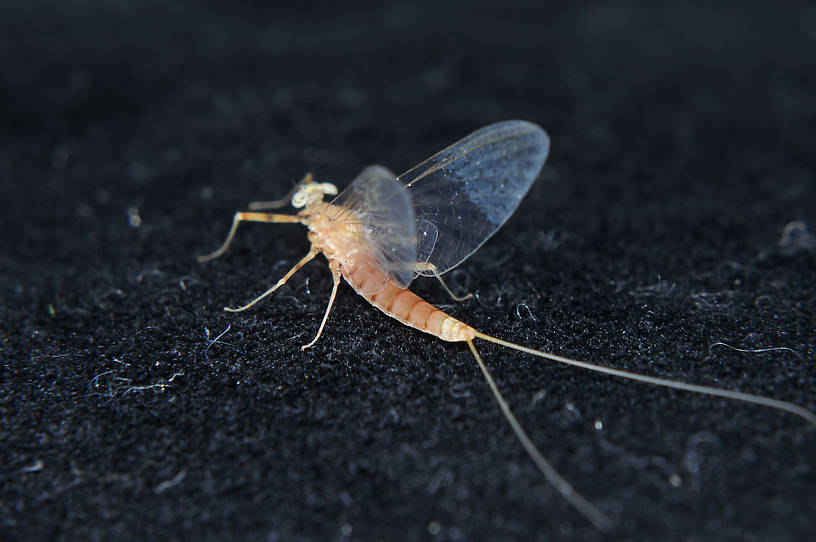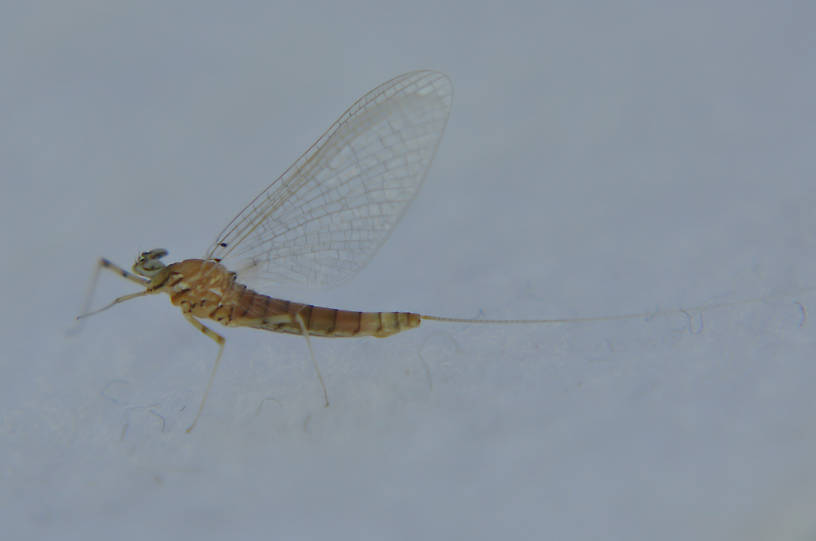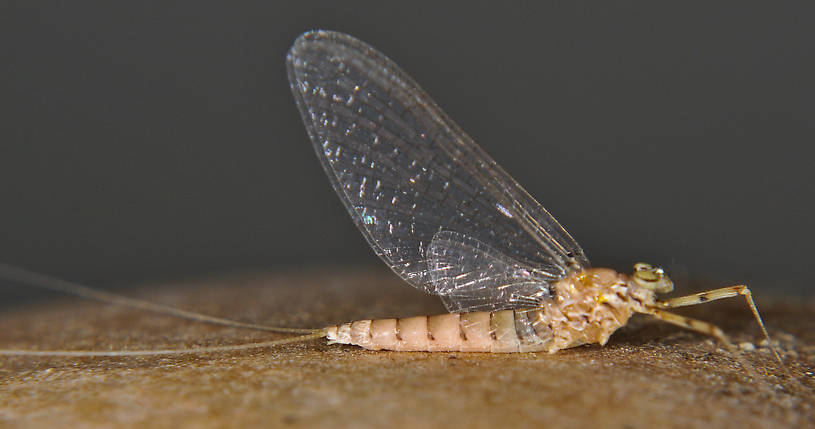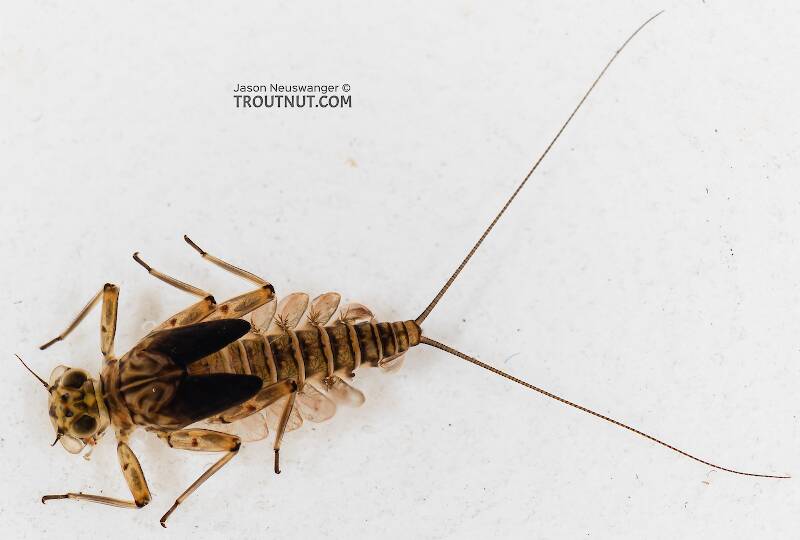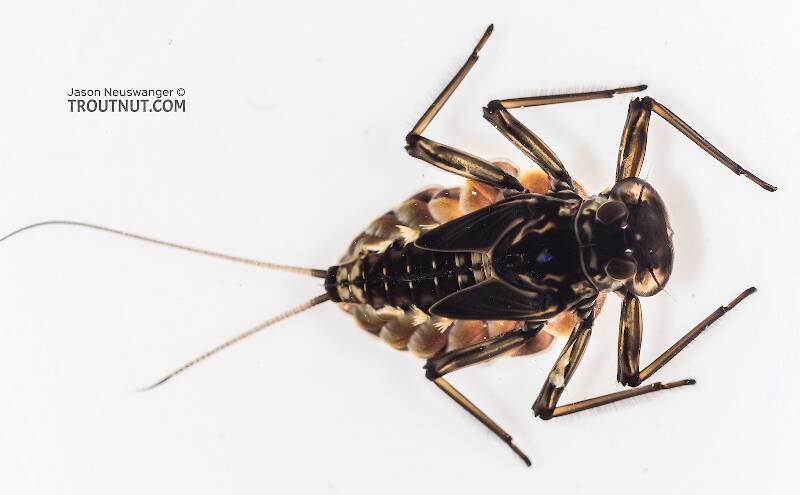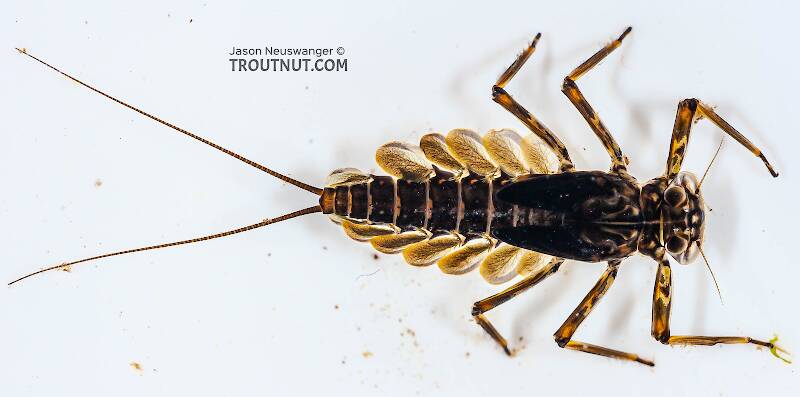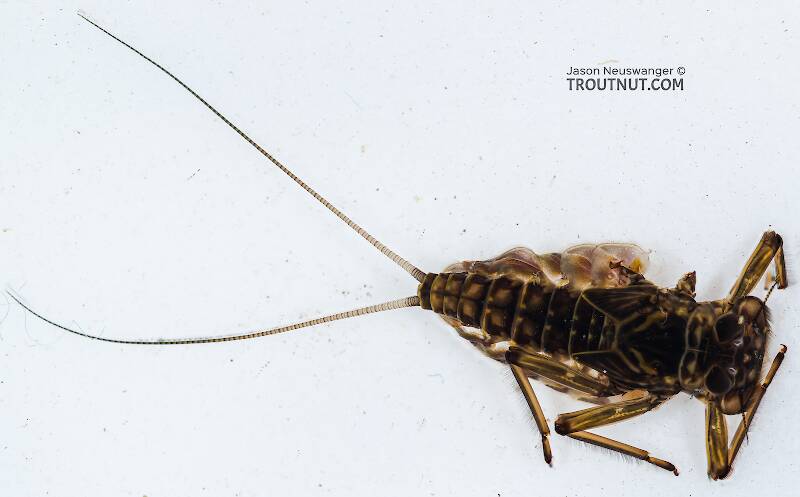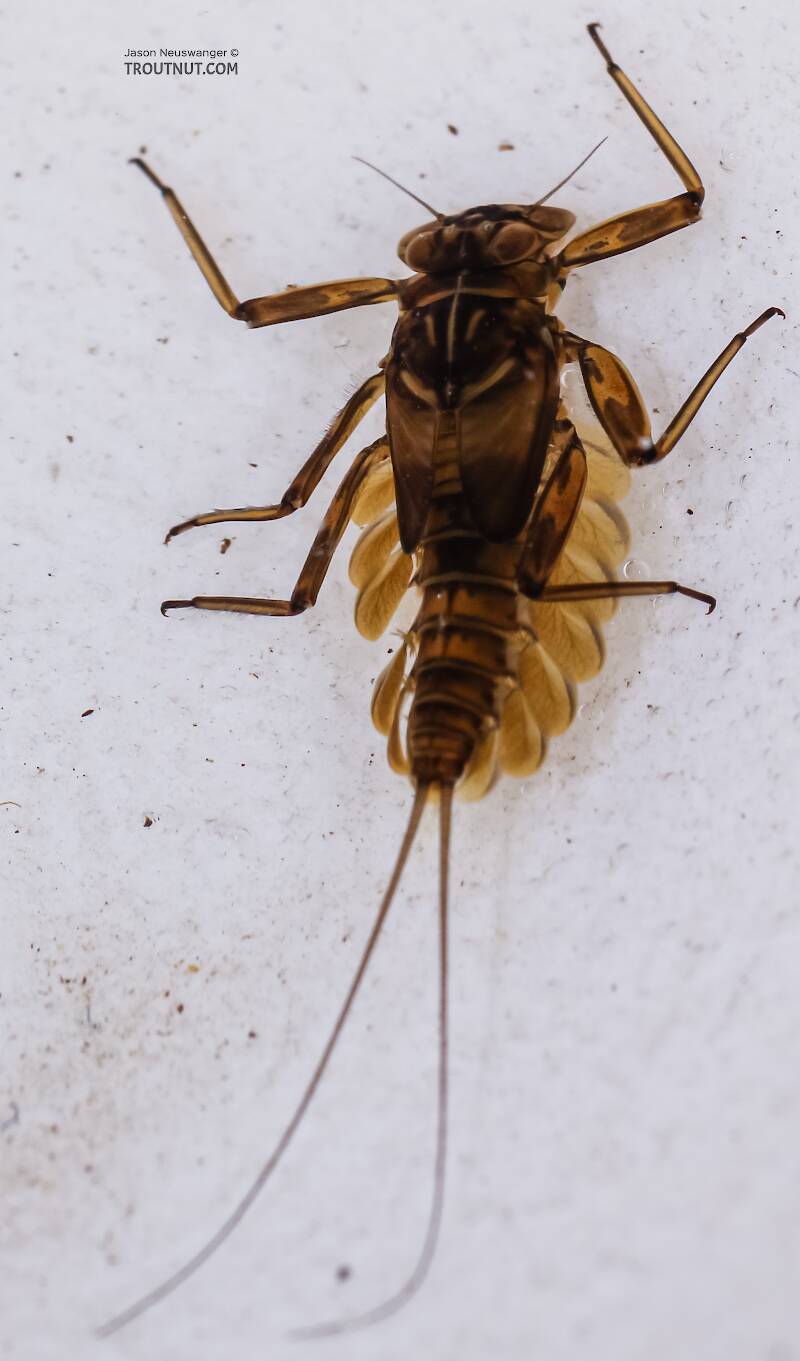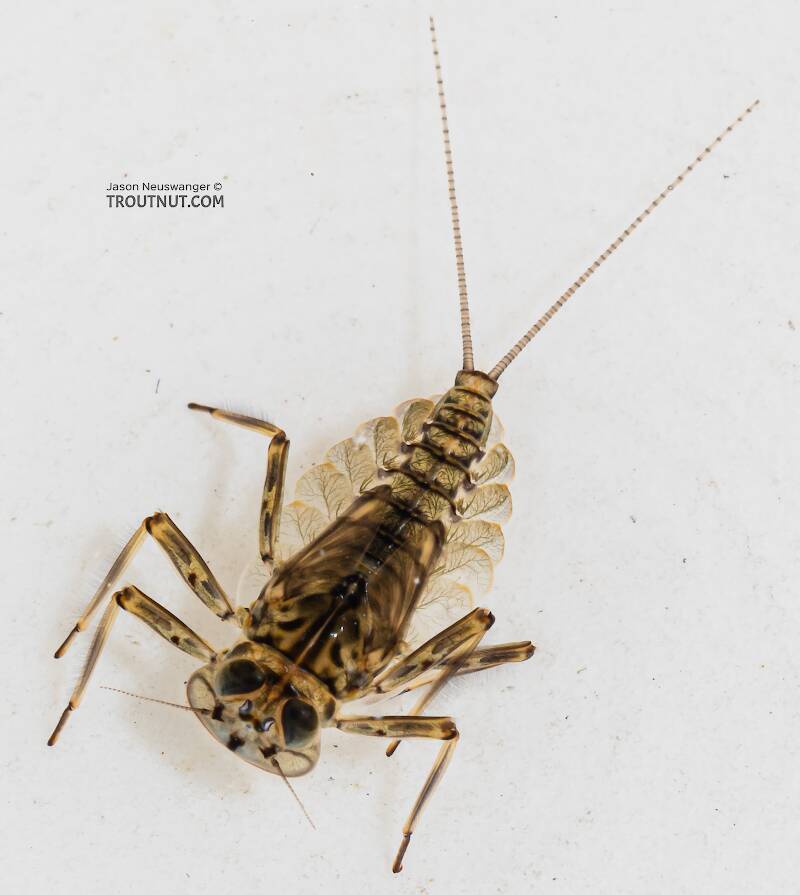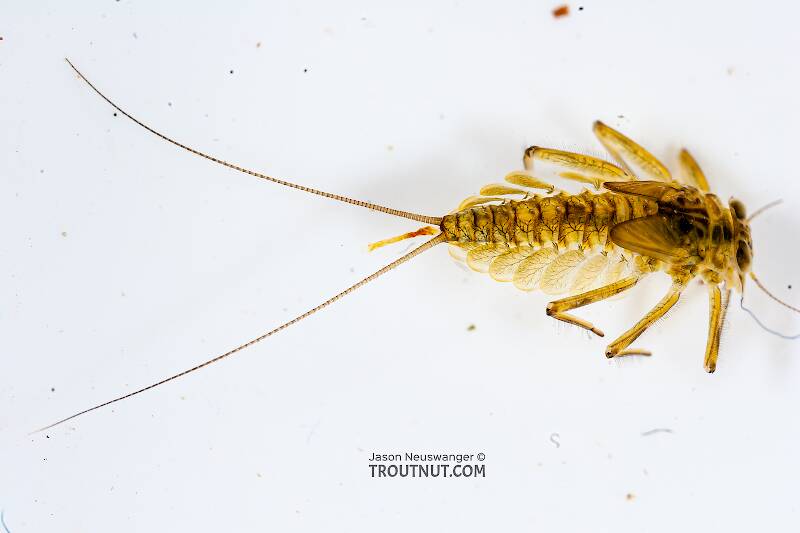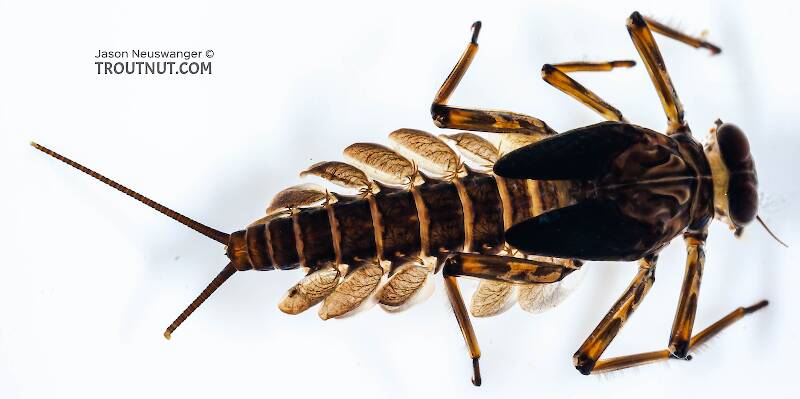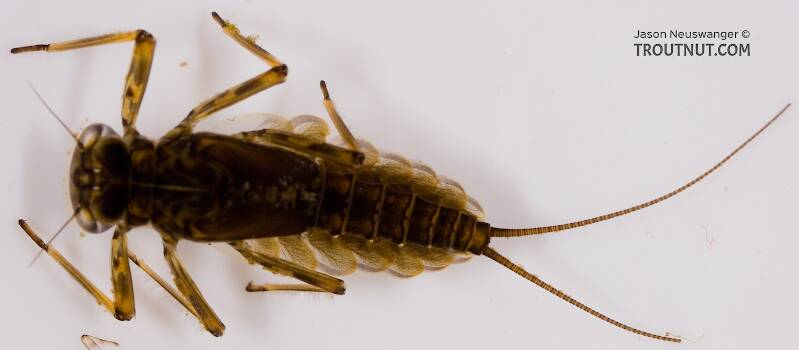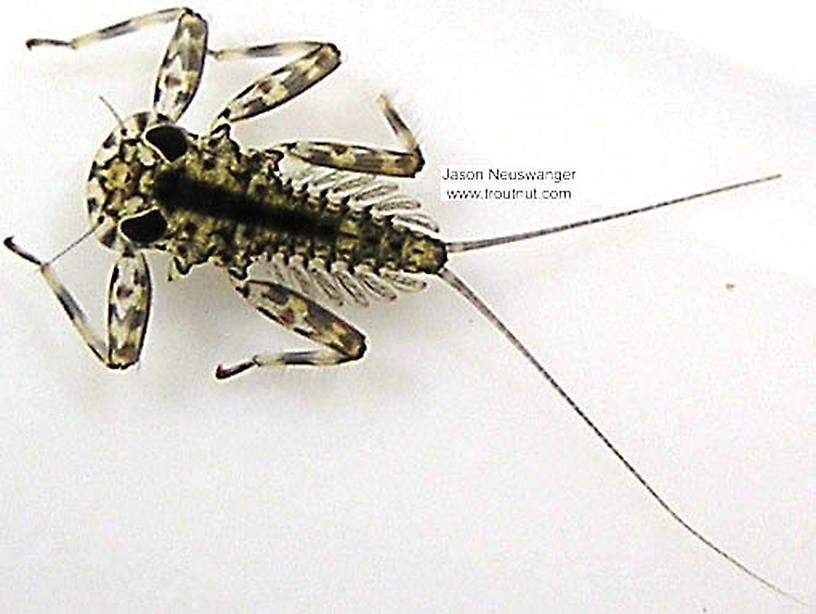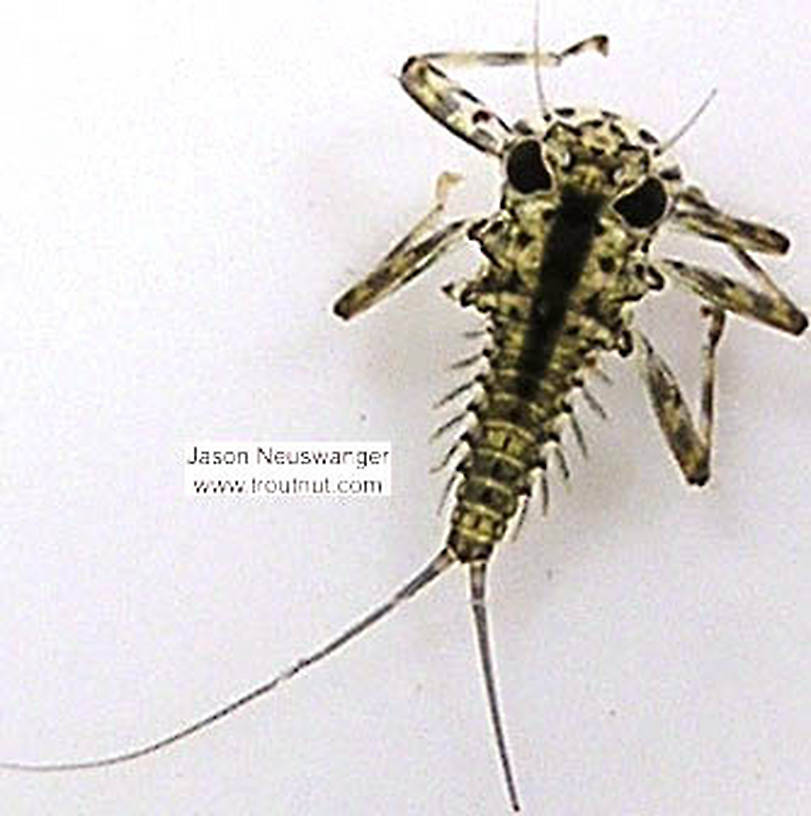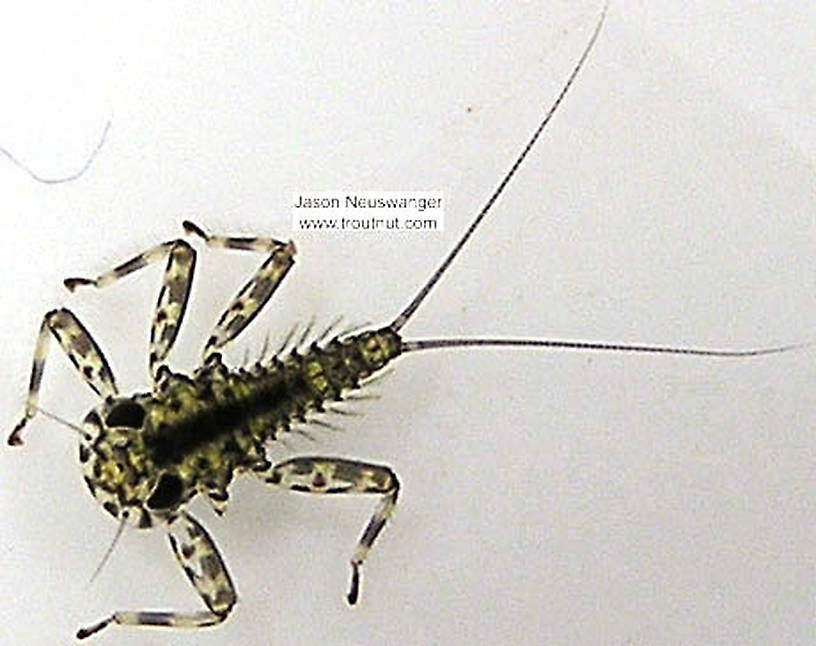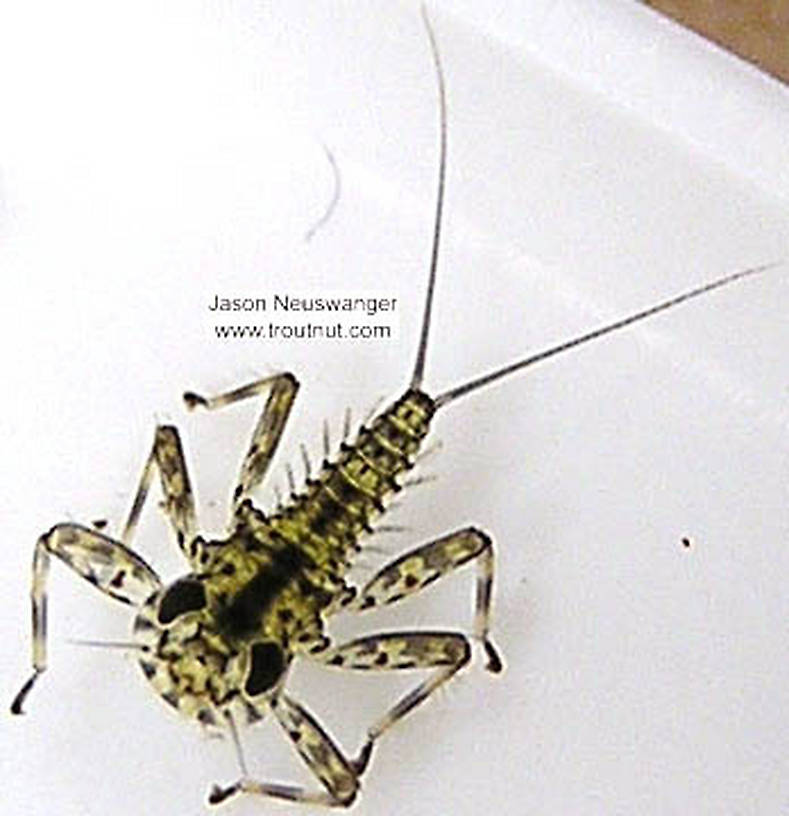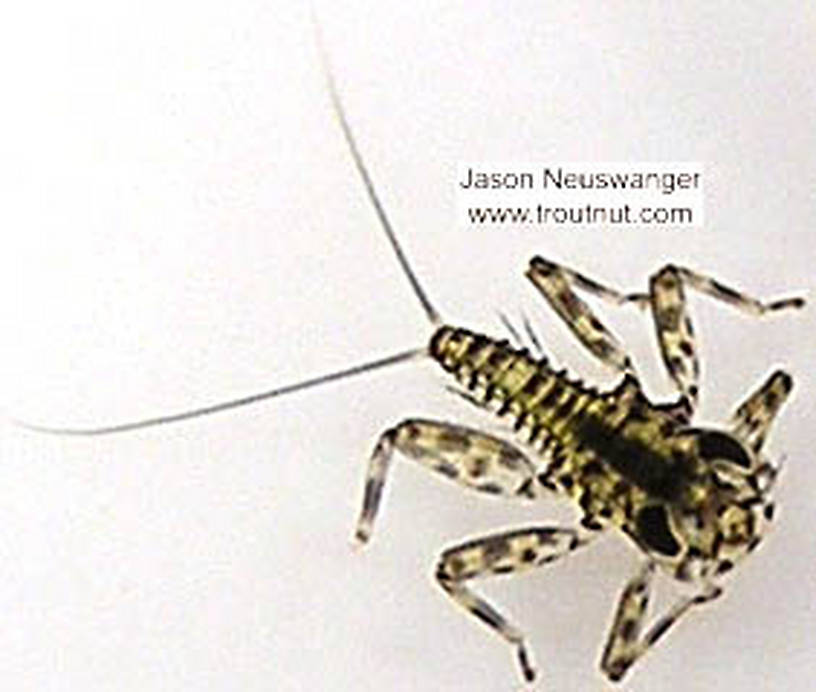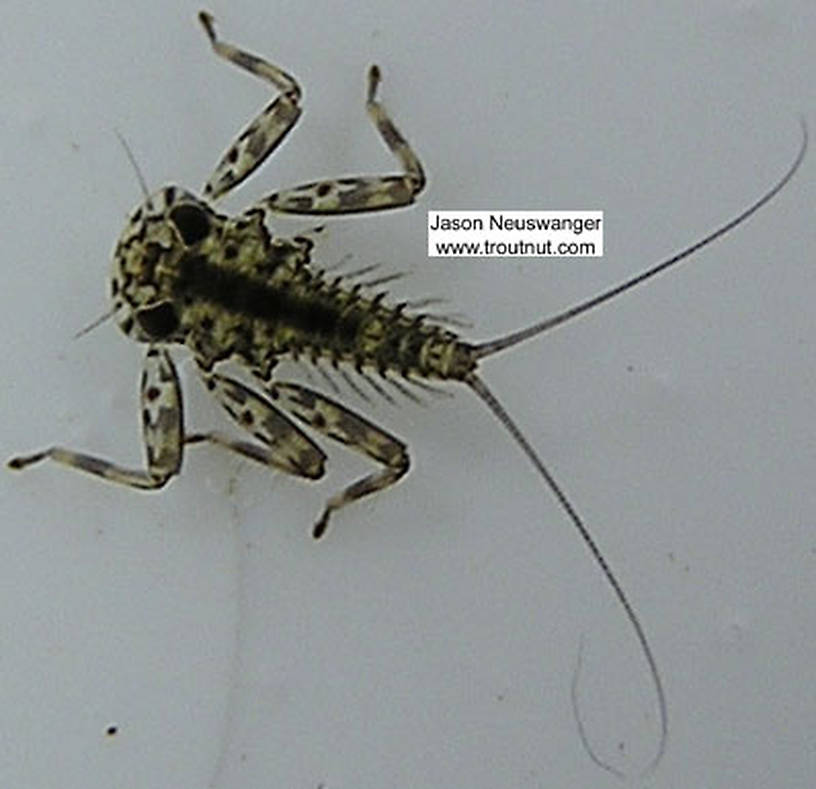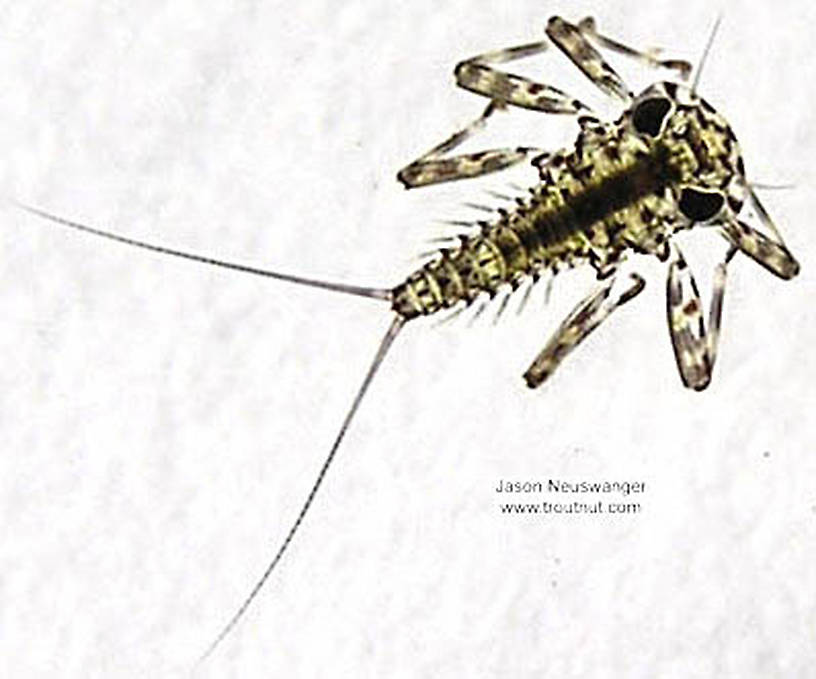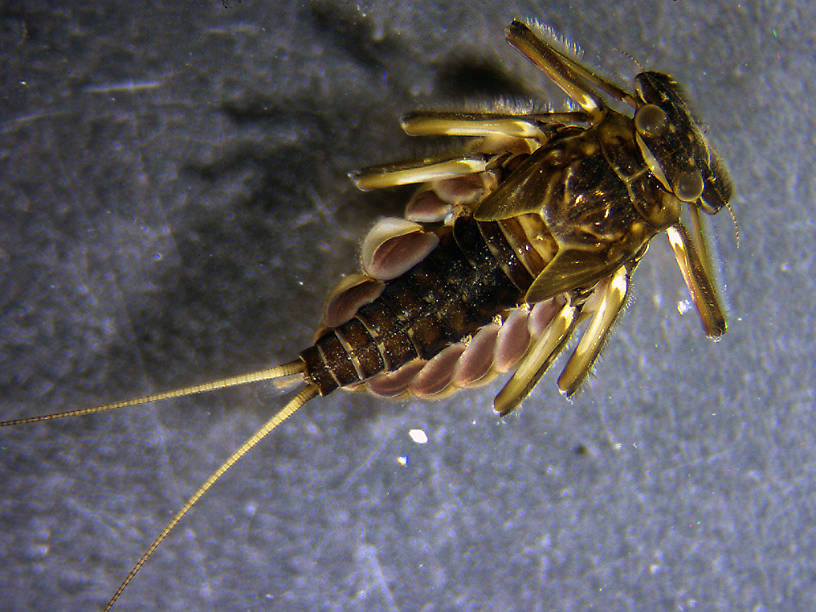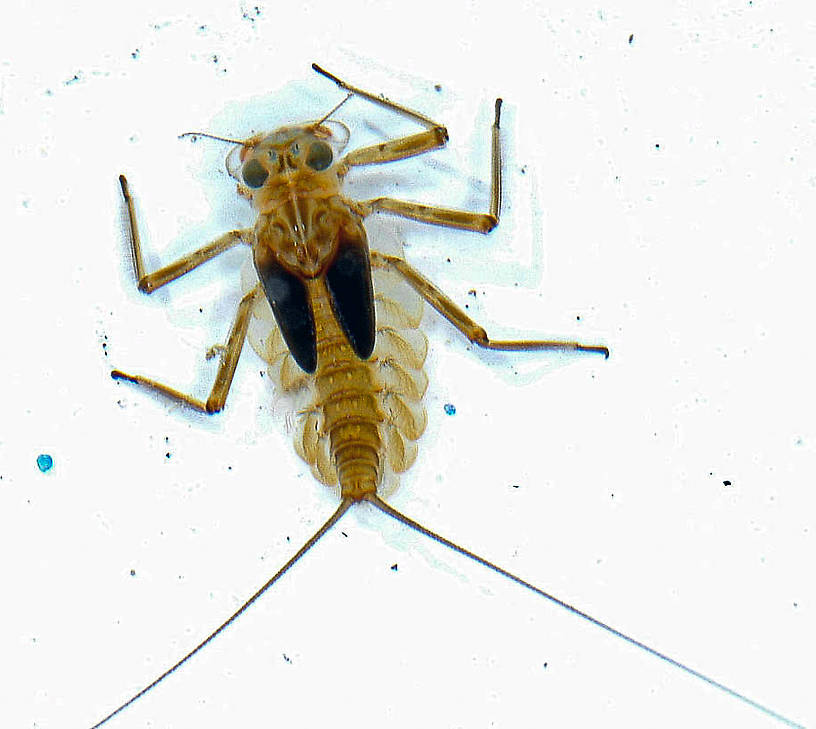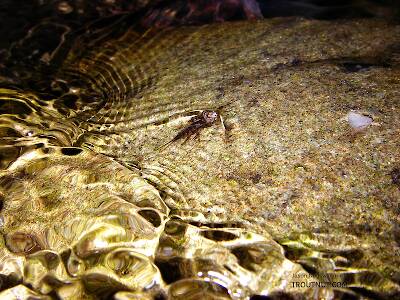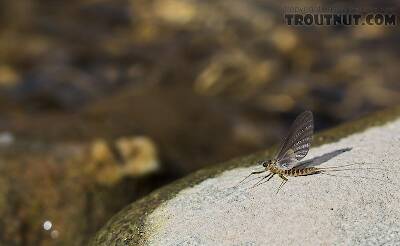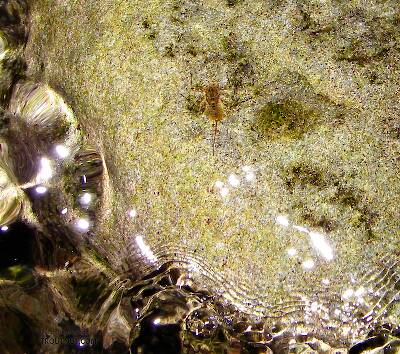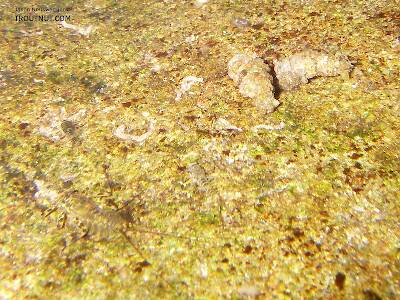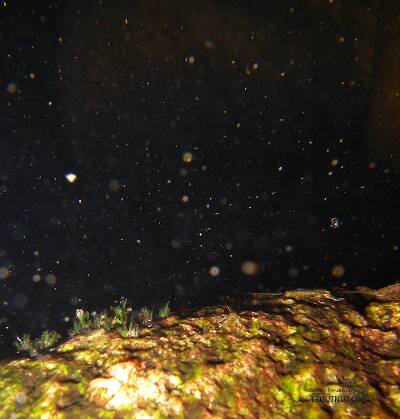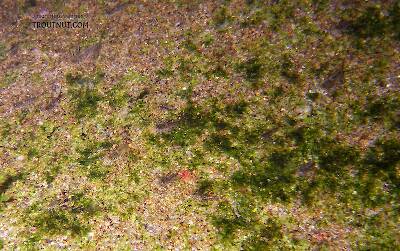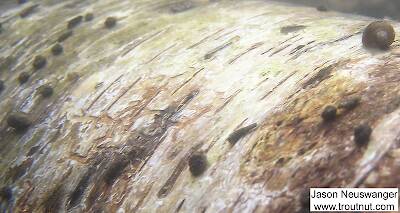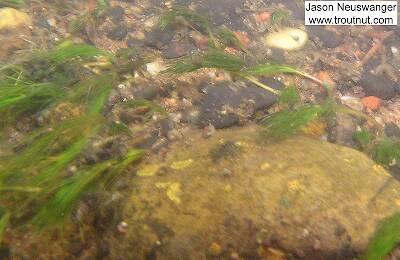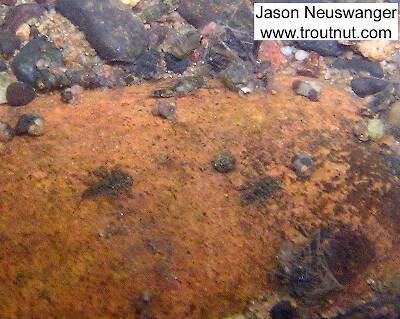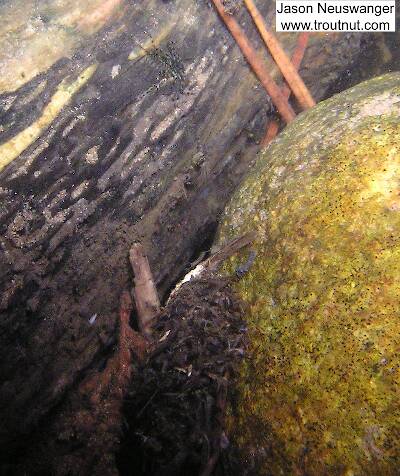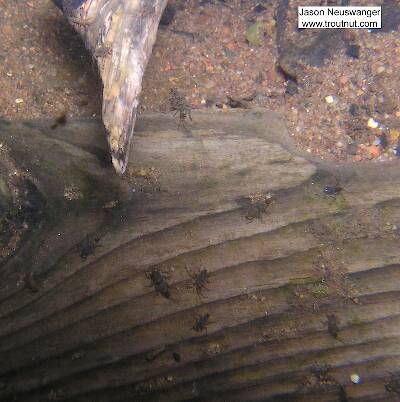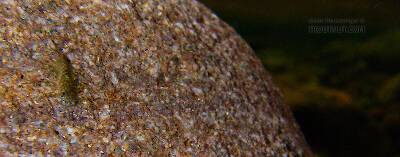
Hex Mayflies
Hexagenia limbata
The famous nocturnal Hex hatch of the Midwest (and a few other lucky locations) stirs to the surface mythically large brown trout that only touch streamers for the rest of the year.
Featured on the forum

This one was surprisingly straightforward to identify. The lack of a sclerite at the base of the lateral hump narrows the field quite a bit, and the other options followed fairly obvious characteristics to Clostoeca, which only has one species, Clostoeca disjuncta.

Troutnut is a project started in 2003 by salmonid ecologist Jason "Troutnut" Neuswanger to help anglers and
fly tyers unabashedly embrace the entomological side of the sport. Learn more about Troutnut or
support the project for an enhanced experience here.
Mayfly Genus Epeorus (Little Maryatts)
There is remarkable variety of form and color within this prolific genus of fast-water mayflies. Different species are found across the country, and several cause good hatches. Fly anglers are likely to encounter the lesser species on occasion, too.
The best Epeorus hatch in the East is Epeorus pleuralis, the famous Quill Gordon, the first abundant large mayfly hatch of the year. Epeorus vitreus comes a little later and is important in both the East and Midwest.
In the West, Epeorus longimanus dominates in fast, high-altitude streams, while Epeorus albertae inhabits slower and lower waters.
The best Epeorus hatch in the East is Epeorus pleuralis, the famous Quill Gordon, the first abundant large mayfly hatch of the year. Epeorus vitreus comes a little later and is important in both the East and Midwest.
In the West, Epeorus longimanus dominates in fast, high-altitude streams, while Epeorus albertae inhabits slower and lower waters.
Genus Range
Hatching behavior
All Epeorus duns emerge from their nymphal shucks below the surface, often while still attached to the stream bed. Most species (with the exception of Epeorus pleuralis) take to the air quickly after emerging. These two factors make wet emerger patterns especially effective during Epeorus hatches.Nymph biology
Most Epeorus species require fast, pure water flowing over gravel or boulders. Some can inhabit moderate currents.Specimens of the Mayfly Genus Epeorus
10 Male Duns
8 Female Duns
11 Male Spinners
10 Female Spinners
19 Nymphs
3 Streamside Pictures of Epeorus Mayflies:
9 Underwater Pictures of Epeorus Mayflies:
Discussions of Epeorus
Distance between the eyes of male Epeorus
Posted by Troutnut on May 3, 2007
Last reply on May 3, 2007 by Troutnut
There has been some discussion here before about Epeorus identification, especially the distance between the eyes of the adult males, which is one identifying characteristic. The keys say that the distance should be "less than the width of the median ocellus," but I have collected a few male duns that didn't quite fit that requirement.
We figured they were Epeorus anyway, so it's not a big deal, but a new specimen I collected sheds a bit of light on the question.
I collected a dun whose eyes were also a bit far apart, which you can see here:
http://www.troutnut.com/specimen/681
Then it molted into a spinner:
http://www.troutnut.com/specimen/682
The spinner's eyes were really almost touching, well within the description of the genus. So that answers our question: the duns may have a little wider spread and the gap will close up in the spinners.
We figured they were Epeorus anyway, so it's not a big deal, but a new specimen I collected sheds a bit of light on the question.
I collected a dun whose eyes were also a bit far apart, which you can see here:
http://www.troutnut.com/specimen/681
Then it molted into a spinner:
http://www.troutnut.com/specimen/682
The spinner's eyes were really almost touching, well within the description of the genus. So that answers our question: the duns may have a little wider spread and the gap will close up in the spinners.
Synonym of vitreus
3 replies
Start a Discussion of Epeorus
References
- Arbona, Fred Jr. 1989. Mayflies, the Angler, and the Trout. Nick Lyons Books.
- Burian, Steven K., Swartz, Beth I., Wick, Philip C. 2008. Taxonomy of Epeorus Frisoni (burks) And a Key to New England Species Of Epeorus. International Advances in the Ecology, Zoogeography, and Systematics of Mayflies and Stoneflies undef(undef): 276-294.
- Caucci, Al and Nastasi, Bob. 2004. Hatches II. The Lyons Press.
- Knopp, Malcolm and Robert Cormier. 1997. Mayflies: An Angler's Study of Trout Water Ephemeroptera . The Lyons Press.
- Needham, James G., Jay R. Traver, and Yin-Chi Hsu. 1935. The Biology of Mayflies. Comstock Publishing Company, Inc.
Mayfly Genus Epeorus (Little Maryatts)
Taxonomy
Species in Epeorus
Epeorus albertaePink Ladies
13
74
Epeorus deceptivus
4
29
Epeorus dispar
0
0
Epeorus dulciana
0
0
Epeorus fragilis
0
0
Epeorus frisoni
4
26
Epeorus grandis
3
20
Epeorus hesperus
0
0
Epeorus lagunitas
0
0
Epeorus longimanusSlate Brown Duns
5
29
Epeorus permagnus
0
0
Epeorus pleuralisQuill Gordons
8
71
Epeorus punctatus
0
0
Epeorus suffusus
0
0
Epeorus vitreusSulphurs
15
64
Species in Epeorus: Epeorus albertae, Epeorus deceptivus, Epeorus dispar, Epeorus dulciana, Epeorus fragilis, Epeorus frisoni, Epeorus grandis, Epeorus hesperus, Epeorus lagunitas, Epeorus longimanus, Epeorus permagnus, Epeorus pleuralis, Epeorus punctatus, Epeorus suffusus, Epeorus vitreus
4 species (Epeorus margarita, Epeorus metlacensis, Epeorus namatus, and Epeorus subpallidus) aren't included.


